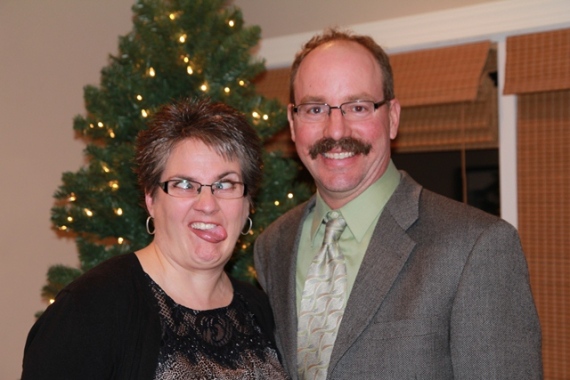I think it’s time I aired a few things… I am not perfect.
I use too much hairspray, swear too much (sorry, mom), drink a little (again – sorry, mom), am addicted to good coffee, and have a temper. I never finished college, and I don’t have perfect grammar. I am overweight because I love good food, and I don’t exercise enough. I am super scared of mice, and I hate spiders.
I have good qualities as well. I am a christian, am active in my church, and I love to give back when I can. I am involved on many agricultural related committees and task forces. I am a wife, mom, aunt, sister, cousin, and friend. I love my whole crazy family – the in-laws and outlaws, too. I try to be respectful at all times, whether I am communicating in person, or on the internet. I am loyal to a fault…yes, I’m still a Minnesota pro sports fan.
Jonathan and I hang out with very different groups of people. We have our neighborhood card club, made up mostly of Belgian-American farmers that are pretty much all related to each other. We are the only Scandinavians in the group. Then there is our dinner club, made up of 5 couples from church. Our ages range from early 40’s to mid-70’s. It is a very eclectic group, but we have tons of fun. I am active in Farm Bureau, and count amongst my friends farmers from all over the US and Canada. There are many different farming styles represented by my friends.
I’m pretty sure there are no others on the planet that have the same personality quirks that I do. I am an individual, unique, even a bit crazy at times. Yet, I am welcomed into each group because I have at least one thing in common with them. The whole six degrees of separation thing has proven itself many times!
Does this sound any different from the rest of you?
I am an organic crop farmer. I’m not a 1st generation hippie farmer like some would like you to believe. Our farm will be celebrating it’s centennial this year. 100 years of continuous Olson family farmers. Jonathan and I started farming together in 1988. We farmed conventionally until 1998, when we started to transition our first field into organic production. We finished transitioning all of our acres just a few years ago. In the early ’90’s, many farm economists were talking about value added opportunities, and finding alternative crops to grow to stay viable. So, we did. We love our method of farming, and we are proud of what we grow. That attitude is pretty much the same attitude that Jonathan’s great-grandfather had when he moved his family to this farm from Iowa. It is the same attitude that Jonathan’s grandfather had when he started raising seed for the Minnesota Crop Improvement Association in the 1940’s.
More confessions – we do not eat an exclusively organic diet. We eat more meat than vegetables at some meals, and don’t feel bad about it. I buy groceries based on taste preferences, and what’s available at the time. I don’t like turnips or tons of root vegetables. I have never tried kale, and part of me thinks there is no way it can be good for you. I don’t like heavy whole wheat breads. And, I don’t feel guilty for my food choices. I know that whatever I choose to eat, a farmer is involved.
I don’t think I fit any stereotypes for organic farmers. Funny thing is, I don’t know too many who do.
The point of this whole thing? Every farmer is unique. We all do things a little differently on our farms, like to eat different foods, and cheer for different sports teams. We can get along when we are face to face at meetings, on trips, or just hanging out. Why, then, does it seem like we can’t get along on the internet? Why do people feel free to put down others in a medium that is viewed by those who may not understand the subjects we are arguing about? Just discussing the pros and cons of certain GM seeds, or different organic methods can quickly turn into a battle between farmers. What’s the point in that? What are others hearing when farmers are putting each other down?
I shared some my laundry at the beginning of this blog – not to make myself feel better, but to point out that we typically only see a small portion of who a person is. Agriculture is the same way. What we talk about on social media is only a small portion of what farming is. Instead of focusing on the faults, why not take a look at the whole picture? You might find that you have more in common with each other than you think.


